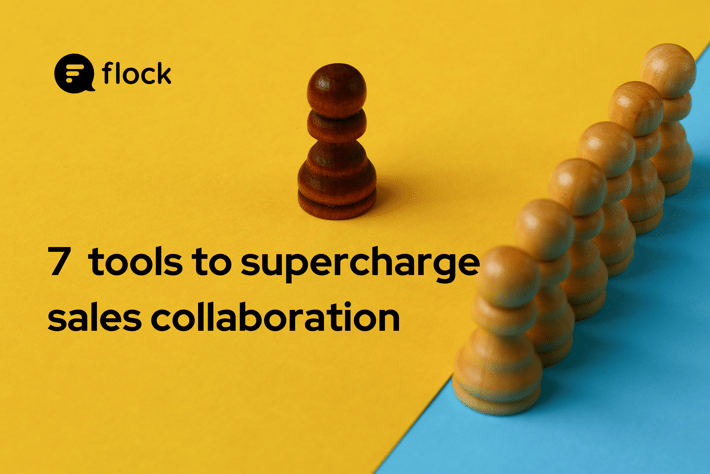 Does your workplace collaborate? …are you sure?
Does your workplace collaborate? …are you sure?
Your team may all like each other, but that doesn’t always mean you’re being collaborative. Effective workplace collaboration takes special skills—so how do you know your company has what it takes to collaborate well?
What is workplace collaboration?
Workplace collaboration is a package deal of communication, coordination, knowledge-sharing, and teamwork between two or more people. Effective collaboration enables teams to do more of their best work, together.
Why do you need collaboration in the workplace?
Collaboration leads to productivity and success and brings with it plenty of benefits:
- Workplace morale
- Innovation and creativity
- Cross-team collaboration
- Cohesion
How you know your workplace is collaborating effectively
- Common goals
- Communication
- Defined roles
- Radical candor and transparency
- Healthy conflict only
- Celebrating success
- Team-wide learning and skill shares
Common goals
Collaboration simply does not exist without a common goal. Laying out these goals across teams is important to seeing the big picture. Here at Flock, we love focusing on OKRs (objectives and key results), to track our end goals and the work we’re doing to achieve them. Keeping track of these is as simple as logging them in a shared to-do list so everyone can see what they should be doing and to what end this work will contribute to the common goal.
Sharing a common goal across teams in the workplace helps everyone understand three main things:
- how their work fits into the larger picture
- what each team does
- what their individual responsibilities are
This leads to better overall communication, accountability, and transparency. Establishing OKRs provide measurable, metric-based goals that drive success.
Communication

Clear communication fosters effective collaboration. Clear communication of goals, needs, and progress is the only way a team can collaborate and keep on track. Communication tools, team meetings, and even visual guides are handy to communicate work progress and achieve that common goal your team is working towards.
Gearing your communication toward effective collaboration requires common sense and courtesy. Your business’ communication can make or break the task at hand. Make things personal and kind, listen intently, and be concise. A team that asks clear questions and gives clear answers will collaborate well.
Defined roles
Your goals are set and communicated well, but how will your team know who’s responsible for what? Effective collaborators establish expectations early and identify specialists who can take responsibility for individual tasks. Designating roles and tasks based on function and skill sets makes a collaborative team stronger.
Radical candor and transparency
Ask anyone at Flock—we love radical candor. Holding back opinions and good ideas doesn’t fare well for a collaborative team. It’s important to be transparent, especially when you have knowledge to back yourself up. Saying “I don’t think this will work, why don’t we try this?” or “I need an extension on this deadline,” helps put your team at ease and communicate better to get the task at hand done. And we all know how important communication is for a collaborative team. Radical candor can lead to the next big thing, or it can even spark an idea in someone else who can build that big thing.
Healthy conflict only
Conflict isn’t always a bad thing. Remember when we talked about radical candor? A team, especially a large one, doesn’t always see eye-to-eye. Different expertise and opinions lead to conflict, which can be an incredible tool for innovation. Say your architect specializes in art deco homes, but your interior designer prefers rustic decor. Rather than arguing back and forth over what’s best for the home you’re building, you can blend the two skills for a unique and innovative home design.
Collaborative teams take the time to see things from other perspectives and make the work better. A collaborative team sees conflict as a chance to be cooperative, listen more, and develop cohesion.
Celebrating success
 Having a clear and defined goal makes it easy to measure success, but it’s not the only success your team will see. A collaborative team sees the strides each individual is making and calls them out. It's important to identify these individual successes to increase morale. It also sets a standard for success and motivates the team as a whole to keep working toward that end goal. The healthy, competitive nature of the workplace comes out as each person strives to do their best. And giving the team a chance to celebrate a team member allows that individual’s skills to shine, letting the team at large know who they can count on.
Having a clear and defined goal makes it easy to measure success, but it’s not the only success your team will see. A collaborative team sees the strides each individual is making and calls them out. It's important to identify these individual successes to increase morale. It also sets a standard for success and motivates the team as a whole to keep working toward that end goal. The healthy, competitive nature of the workplace comes out as each person strives to do their best. And giving the team a chance to celebrate a team member allows that individual’s skills to shine, letting the team at large know who they can count on.
Team-wide learning and skill shares
Okay, this one’s a natural byproduct of collaboration, but that’s why it’s such a strong sign of effective collaboration. In a team with clear communication and transparency, it’s only natural that what each individual brings to the table will be absorbed. This leads to more open dialogue, innovation on ideas and processes, sharing across teams, and ultimately, the ability to anticipate what’s next.
Flock’s marketing team is always learning more about the product from the sales team, who learns about customer needs and conversation from the marketing team, and so on. Our data-driven team members teach our content writers how to navigate business analytics. A team that collaborates—especially across teams—is one that learns and grows. And isn’t that what everybody wants in the workplace?
Tools for effective workplace collaboration
Just like communication, workplace collaboration is always made easier by the right tools. Keeping collaboration effective means understanding the processes that work for your team.
Here are some tools to consider to improve collaboration in your workplace:
- Chat tools (Flock, Slack, etc)
- Task management (Asana, Trello, etc.)
- File sharing (Dropbox, Google Suite, etc.)






